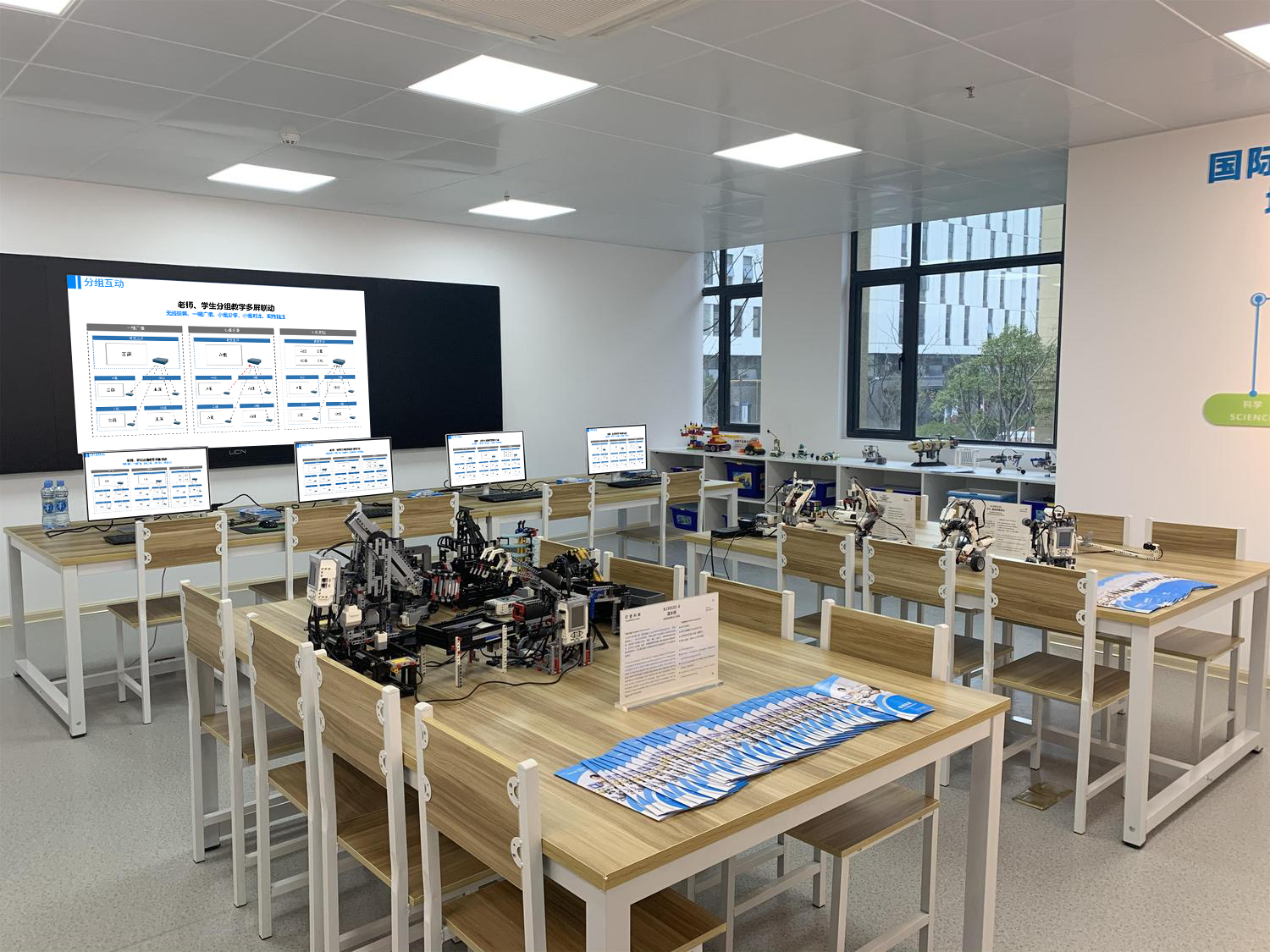Interactive Classrooms: An Efficient Teaching and Interaction Solution
This interactive classroom solution is based on device collaboration. It uses simple operations to connect every part of teaching and learning, freeing teachers from the podium and helping students shift from passive listening to active participation. This significantly boosts classroom interaction efficiency.
Seamless Device Linkage for More Flexible Teaching
The main classroom screen is compatible with various devices, including phones, computers, and tablets. Whether a device runs on Android, Apple, or Windows, it can connect wirelessly with a QR code or with a cable in just 3 seconds, allowing you to mirror courseware and videos to the large screen. A teacher can walk around the classroom with a tablet, using their finger to swipe through pages and highlight key points. When teaching a math formula, they can highlight a key step in red. When analyzing a text, they can circle the core paragraph. Students just have to look up to see everything clearly.
Students’ devices can also connect to the large screen easily. If a student wants to share their problem-solving process, they can just tap to mirror their draft. During group discussions, each group’s conclusion can be displayed in a split-screen view on the main screen, so everyone in the class can clearly see each group’s ideas without having to crowd around a small notebook.
Diverse Interactive Options for More Engaged Students
You can launch instant quizzes at any time during class. A teacher can post a multiple-choice or fill-in-the-blank question on their device, and students can answer on their own devices. The main screen will display the results in real time, so it’s clear at a glance which questions have a low correct answer rate and which students haven’t caught up. The teacher can then address these specific points, ensuring no student is left behind.
It’s even more convenient in a lab class. A visualizer can be used to project the reaction in a test tube or the wiring on a circuit board onto the large screen, so students in the back don’t have to crowd to the front. If a student gets stuck during an experiment, they can take a photo of their work and mirror it to the large screen, and the teacher can point to the photo and explain the issue on the spot. It’s much more efficient than having to crowd around to see. You can even set up a team challenge where groups mirror their results, and the teacher and students can score them together, which makes the classroom instantly more lively.
Hassle-Free Post-Class Wrap-Up for Easier Management
Classroom courseware, annotations, student answers, and shared content are all automatically saved to a class resource library. After class, students can scan a QR code to review the content, so they don’t have to worry about missing anything. Teachers can view backend data to clearly understand students’ weak points and make precise adjustments to their lessons.
The devices can be used just by connecting to the network. An administrator can remotely check the status of devices in each classroom, seeing if there are any issues or if they’re being used normally, so they don’t have to visit each classroom. They can also set permissions to prevent unauthorized devices from disrupting a lesson. This makes daily maintenance much easier.